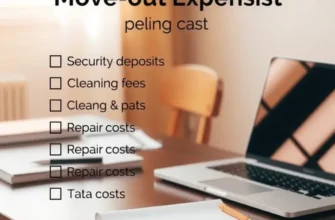Breaking a lease can feel overwhelming, especially for young professionals, first-time renters, students, couples, and families. Whether it’s due to a job change, financial challenges, or simply needing more space, the process of negotiating lease break terms should be clear and straightforward. Understanding your rights and responsibilities is crucial to ensure you can navigate this situation without incurring significant financial ramifications. This guide will help you communicate effectively with landlords, understand legal terminology, and find solutions that benefit all parties involved. It’s about achieving a positive outcome that alleviates stress and sets you up for future housing success.
Understanding Your Lease Agreement

Before you can successfully negotiate a lease break, understanding every detail of your lease agreement is crucial. Scrutinize the duration — the agreed-upon term outlines your commitment to the property, typically a year or more. Equally important are the break clauses, which specify conditions under which you can terminate the lease early. Not all leases include these clauses, but if they do, they’re your first legal avenue for negotiation.
Another critical aspect is the penalties for breaking your lease. These are usually financial and can include losing your security deposit or paying a certain amount of rent until a new tenant is secured. Knowing these beforehand allows you to anticipate costs and strategize how you might mitigate them during negotiations.
Beyond these elements, understand any additional policies outlined in your agreement. Some leases have clauses about subletting or transferring the lease to a new tenant, which can be an alternative to breaking it. Verify if you can make any modifications to your rental, such as securing your balcony with safety netting, which might allow you to weather minor disputes until a more favorable breaking point source.
While the legal jargon can be intimidating, don’t hesitate to reach out for clarification. Communicate with your landlord or seek guidance from a legal professional if needed. Understanding not only your rights but also your landlord’s expectations can enable a smoother negotiation process.
Before meeting with your landlord, prepare a list of questions. Ask for clarification on ambiguous terms and seek to confirm any negotiated terms in writing. This proactive approach shows your landlord you are serious and informed.
Finally, don’t overlook the timing of your request. If you’re approaching the end of your lease or can point to extenuating circumstances like job relocation or financial hardship, your landlord might be more amenable. Aligning your needs with their business interests can pave the way to a mutually beneficial agreement.
Familiarizing yourself thoroughly with your lease terms arms you with knowledge and poise. You’ll be prepared to approach your landlord confidently, equipped with the details necessary to strike a deal that could save you both money and stress.
Effective Strategies for Negotiation

Once you comprehend your lease agreement, it’s time to negotiate. Preparation is key. Start by knowing your needs and what you can compromise on. Build a solid case by researching similar leases in your area. Armed with knowledge, you can support your position with recent market trends or personal situations warranting a break.
Approaching negotiation with an open mind is crucial. While you may have specific terms in mind, consider alternatives that might work for both parties. Being flexible can open doors to solutions previously unconsidered, sometimes leading to a quicker resolution.
Communication is an art here. Clear, concise, and logical communication enables you to express your position effectively. Remember, your tone can set the stage for a positive interaction. By maintaining a professional demeanor, you reassure your landlord of your commitment to finding a fair solution.
Building rapport with your landlord is often undervalued. Establishing a respectful relationship can go a long way toward securing favorable terms. Share a bit about your aspirations or situations, such as family changes or job relocations. This transparency may elicit empathy, positioning you as more than just a tenant.
Another angle is to propose creative alternatives. If a rent reduction is necessary, suggest extending the lease term in exchange. Offering upfront maintenance help or finding a suitable replacement tenant could also ease your landlord’s concerns.
Finally, remember that landlords are more open to negotiation than often assumed. Their priority is a stable tenancy, and many appreciate open dialogue and proactive solutions. For more insights, check out Financial Planning for Renters, which could help you better navigate rental discussions.
By integrating these strategies, you can cultivate a scenario where both parties feel heard and accommodated, making leasing relationships smoother and mutually beneficial.
Final words
Breaking a lease does not have to be a daunting experience. By understanding your lease and employing effective negotiation strategies, you can reach terms that safeguard your financial future and satisfy both parties. Cultivating open communication, preparing your arguments, and maintaining a positive relationship with your landlord can lead to successful outcomes. Remember, this process is as much about clarity and compromise as it is about legal terms. Stay informed and proactive for a smoother transition.









